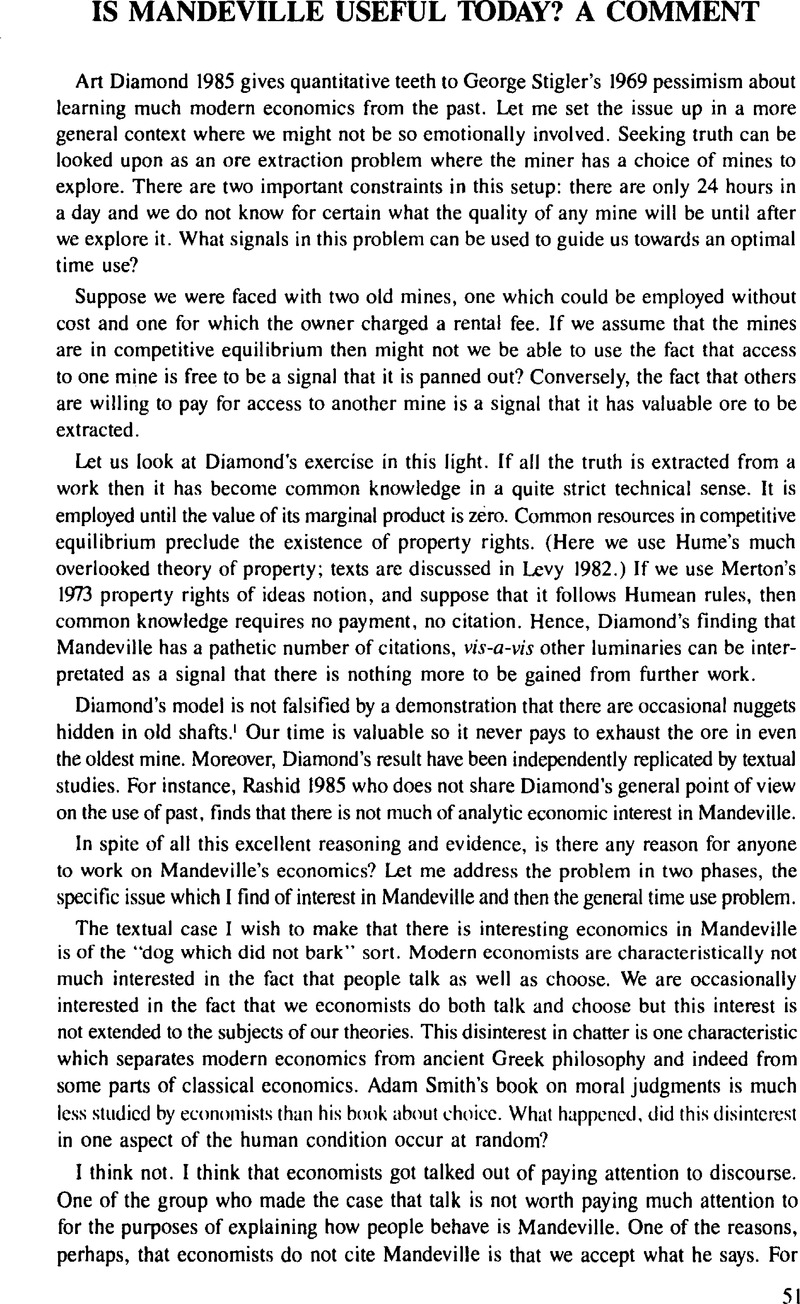No CrossRef data available.
Article contents
Is Mandeville Useful Today? A Comment
Published online by Cambridge University Press: 11 June 2009
Abstract
An abstract is not available for this content so a preview has been provided. Please use the Get access link above for information on how to access this content.

- Type
- Contributed Papers
- Information
- Copyright
- Copyright © Cambridge University Press 1987
References
BIBLIOGRAPHY
Diamond, Arthur, “Does Mandeville Matter Today.” History of Economics Society Bulletin.” 1985.CrossRefGoogle Scholar
Hundert, E. J. “Bernard Mandeville and the Rhetoric of Social Science.” Journal of the History of Behaviorial Sciences 12 (1986): 311–320.3.0.CO;2-D>CrossRefGoogle Scholar
Levy, David. “S. T. Coleridge Responds to Adam Smith's ‘Pernicious Opinion.’” Interpretation 14 (1986b): 89–114.Google Scholar
Levy, David. “Rational Choice and Morality.” History of Political Economy 14 (1982): 1–36.CrossRefGoogle Scholar
Levy, David. “Utility-Enhancing Consumption Constraints.” Economics and Philosophy 1987, forthcoming.Google Scholar
Rashid, Salim. “Mandeville's Fable: Laissez-Faire or Libertinism.” Eighteenth-Century Studies 18 (1985): 313–30.CrossRefGoogle Scholar
Stigler, George. “Does Economics Have a Useful Past,” History of Political Economy 1 (1969): 217–30.CrossRefGoogle Scholar
Stigler, Stephen M. “Simon Newcomb, Percy Daniell, and the History of Robust Estimation.” 68 Journal of the American Statistical Association (1973): 872–879.Google Scholar


